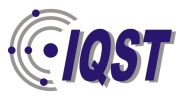Purpose and Characteristic of Classroom Assessment
- To understand purposes of classroom assessment;
- To define the concept of assessment;
- To characterize the classroom assessment.
With the release of the constructivist approach to science teaching, the issues of why, how, and what we, as teachers, assess in our classrooms will become a major challenge in the science teaching and learning. As educators are changing their ideas about what constitutes exemplary inquiry-based learning, and recognizing that science is an active process that encourages higher-order thinking and problem solving, there is an increased need to align assessment.
Assessment is a continuous, ongoing process that involves examining and observing student's behaviours, listening to their ideas, and developing questions to promote conceptual understanding.
Constructivism is the idea that learning is an active process of building meaning for oneself. Thus, students fit new ideas into their already existing conceptual frameworks. Constructivists believe that the learners' preconceptions and ideas about science are critical in shaping new understanding of scientific concepts. Assessment based on constructivist theory must link the three related issues of student prior knowledge (and misconceptions), student learning styles (and multiple abilities), and teaching for depth of understanding rather than for breadth of coverage.
The Purpose of AssessmentCritical to educators is the use of assessment to both inform and guide instruction. Using a wide variety of assessment tools allows a teacher to determine which instructional strategies are effective and which need to be modified. In this way, assessment can be used to improve classroom practice, plan curriculum, and research one's own teaching practice.
Assessment is changing for many reasons. The valued outcomes of science learning and teaching are placing greater emphasis on the student's ability to inquire, to reason scientifically, to apply science concepts to real-world situations, and to communicate effectively what the student knows about science. The teacher's role in the changing landscape of assessment requires a change from merely a collector of data, to a facilitator of student understanding of scientific principles.
Characteristics of AssessmentIn the context of constructivist approach , assessments need to gauge the progress of students in achieving the three major learning outcomes of constructivist approach: conceptual understanding in science, abilities to perform scientific inquiry, and understandings about inquiry.
All learners come to a learning tasks with some relevant knowledge, feelings and skills. Meaningful learning occurs when the learners seeks to relate new concepts and propositions to relevant existing concept and propositions in her/his cognitive structure (Mintzes, Novak, Wandersee, 2000).
Constructivist approach to assessment is a formative rather than a summative. Its purpose is to improve the quality of student learning, not to provide evidence for evaluating or grading students. Assessment have to respond to the particular needs and characteristics of the teachers, students and science content. Assessment is context-specific: what works well in one class will not necessarily work in another.
Assessment is ongoing process. Teachers get feedback from students of their learning. Teachers then complete the loop by providing students with feedback on the results of the assessment and suggestions for improving learning.
Tasks (assignments)- How you can explain the concept of assessment in constructivist classroom?
- How should student learning be assessed?
- Why students should be assessed in constructivist classroom?
Assessment can play an important role in the larger “assessment movement” that is discussed in many European countries recently. Constructivist theory requires a different approach to assessment. This assessment needs tools and methods to fit its purposes, and those will not be the same standardized tests. Constructivist classroom assessment requires the development of its own “appropriate technology” – simple tools designed for the task at hand: the understanding and improvement of learning.
Next ReadingBransford, J.D., Brown, A.L., Cocking, R.R. (Ed) How People Learn. Brain, Mind, Experience, and School. Washington, D.C.: National Academy Press, 2000. First Edition. ISBN 0-309-07036-8.
Dekkers, P., & Thijs, G. (1998). Making Productive Use of Students’ Initial Conceptions in Developing the Concept of Force. Science Education, 82, 31-51.
Hadjiachilleos, N., & Valanides, N. (2006). Cognitive Conflict and its Effects on Conceptual Change in Science: Two Scenarios from the Domain of Physics. Paper presented at the Joint North American, European, and South American Symposium on Science and Technology Literacy for the 21st Century. May 31st- June 4th, 2006, Nicosia, Cyprus.
Novak, J. (2002). Meaningful Learning: The Essential Factor for Conceptual Change in Limited or Inappropriate Propositional Hierarchies Leading to Empowerment of Learners. Science Education, 86(4), 548-571.
Posner, G., Strike, K., Hewson, P., & Gertzog, W. (1982). Accommodation of a Scientific Conception: Toward a Theory of Conceptual Change. Science Education, 66(2), 221-227.
ReferencesAngelo T.A., Cross, K.P. Classroom Assessment Techniques. San Francisco: Jossey-Bass Publisher, 1993. Second Edition. ISBN 1-55542-500-3.




